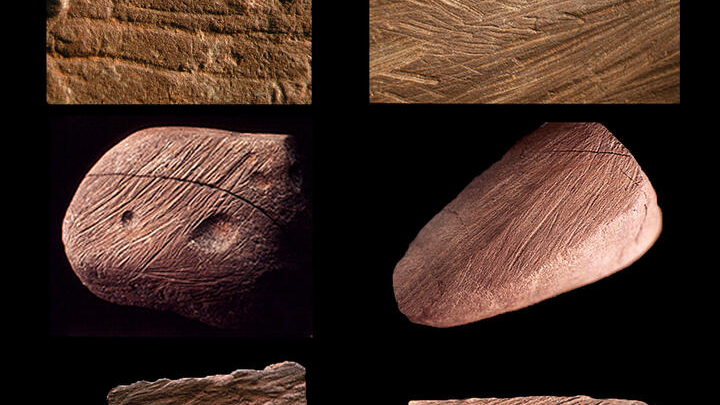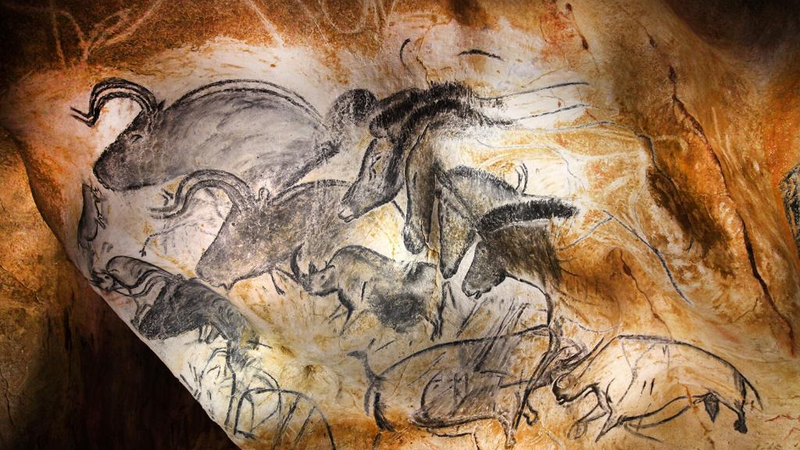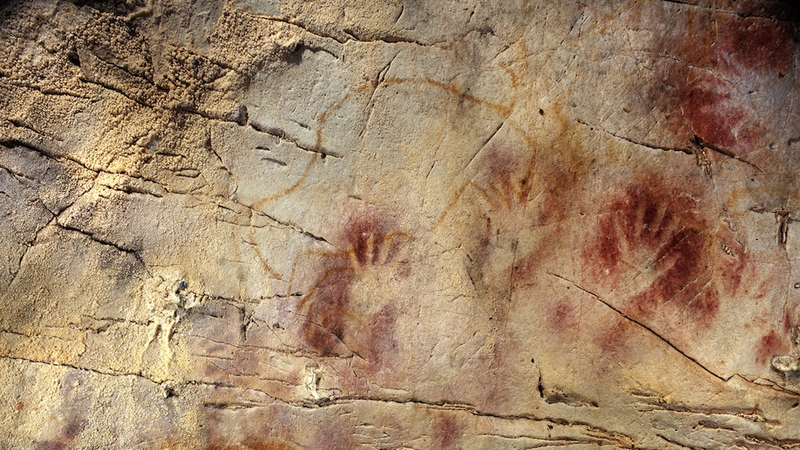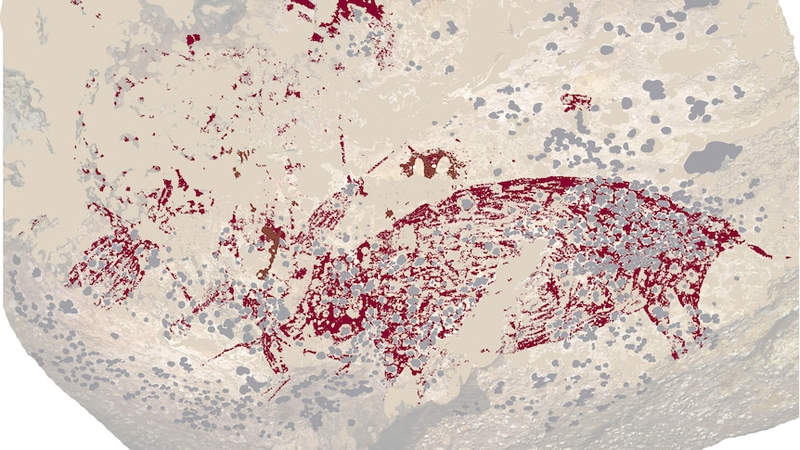Standing before the rock walls of Lascaux Cave, French archaeologist André Leroi-Gourhan burst into laughter—the ochre-painted horses’ front legs stretched straight out like stick figures in modern comics, frozen in a comical "equine slide." This whimsical detail reveals our prehistoric ancestors’ most relatable side: their 30,000-year-old "social feed" contained not just survival tips and artworks, but also snapshots of daily life.
The First "Post": Abstract Art on Rock

In 2018, a thumbnail-sized silcrete flake from South Africa’s Blombos Cave stunned archaeologists. Nine ochre-red lines formed precise crosshatches—humanity’s earliest "social media update" dating back 73,000 years. Published in Nature (September 2018), this discovery by Prof. Christopher Henshilwood's team confirmed conscious symbolic behavior in Homo sapiens 30 millennia before European cave art.
When early humans dragged sharpened hematite across stone, they unknowingly launched civilization’s first "feed." These seemingly random scratches hid geometric precision: 45-degree angles and repeating patterns. Just as we curate Instagram grids today, Paleolithic "influencers" practiced primal aesthetics on rock canvases.
Viral "Content": Prehistoric Top Artists

The Chauvet Cave in France, sealed for 23,000 years until its 1994 discovery, preserves 37,000-year-old charging rhinos rendered with torchlight chiaroscuro. Archaeologist Jean Clottes noted how artists exploited limestone’s texture to create 3D effects—a technique later seen in Renaissance frescoes. Radiocarbon dating by the French Ministry of Culture (2012) confirms these as Europe’s oldest figurative art.
In Spain’s Altamira Cave, 19th-century excavator Marcelino Sanz de Sautuola faced ridicule for claiming Upper Paleolithic origins of its polychrome bison. Modern microscopy proved him right: mineral crusts over paintings date to 18,500 BP (Science, 2012).
The Rituals Behind "Likes"

The 40,800-year-old hand stencils in Spain’s El Castillo Cave ignited a paradigm shift. Using uranium-thorium dating, UK archaeologist Alistair Pike (2012) demonstrated some predate Homo sapiens arrival in Europe, suggesting Neanderthal authorship. These negative handprints—created by blowing pigment through hollow bones—cluster in ritualistic patterns, possibly documenting coming-of-age ceremonies.
At France’s Lascaux, archaeologist Norbert Aujoulat spent 15 years decoding the "Hall of Bulls." His 2004 study revealed lunar-phase-aligned horse depictions, suggesting celestial calendars encoded in what was once dismissed as "primitive doodling."
Paleolithic "Design Tools"

Indonesian caves on Sulawesi yielded 44,000-year-old hunting narratives using hematite-manganese mixes. Griffith University researchers (2019) identified brushstrokes from chewed twigs—a technique Aboriginal Australians still use. In France’s Pech Merle Cave, 25,000-year-old artists employed spray-painting: placing hands on walls then blowing pigment through bone tubes to create stencils.
The ultimate innovation comes from Niaux Cave. Archaeologist Jean Clottes’ 2010 experiment recreated moving projections using resin fires and carved bone—a Stone Age zoetrope animating galloping horses.
Timeless Graffiti DNA

When Picasso visited Altamira in 1934, he allegedly said: "We have invented nothing." Indeed, the 17,000-year-old "Chinese Horse" at Lascaux uses the same twisted perspective later seen in Cubism. Modern street artists like Banksy unknowingly echo Paleolithic instincts—using public spaces for coded social commentary.
As Oxford archaeologist Paul Pettitt observes: "From Blombos hashtags to Chauvet memes, image-sharing isn’t just culture—it’s cognitive hardwiring."
References:
- Henshilwood, C.S. et al. (2018). Nature 562, 115-118
- Pike, A.W.G. et al. (2012). Science 336, 1409-1413
- Clottes, J. (2010). Chauvet Cave: The Art of Earliest Times
- Aubert, M. et al. (2019). Nature 576, 442-445
- Aujoulat, N. (2004). Lascaux: Movement, Space and Time
- Pettitt, P. (2022). Homo Sapiens Rediscovered (Thames & Hudson)
- French Ministry of Culture. (2012). Chauvet Cave Radiocarbon Chronology Report
- Sanz de Sautuola, M. (1880). Breves apuntes sobre algunos objetos prehistóricos de la provincia de Santander(以上图片来自于网络,点击图片链接可以访问原始网站)